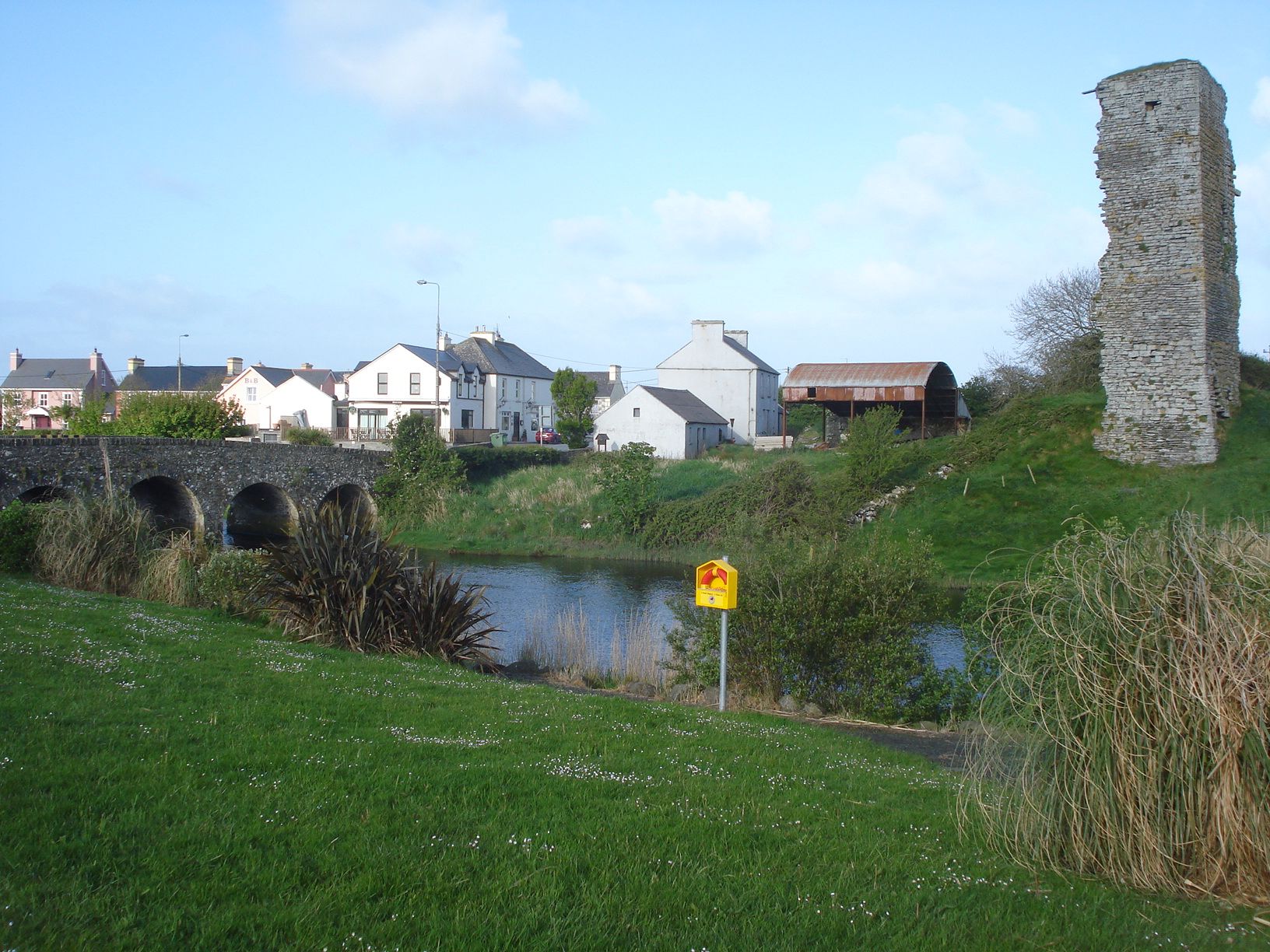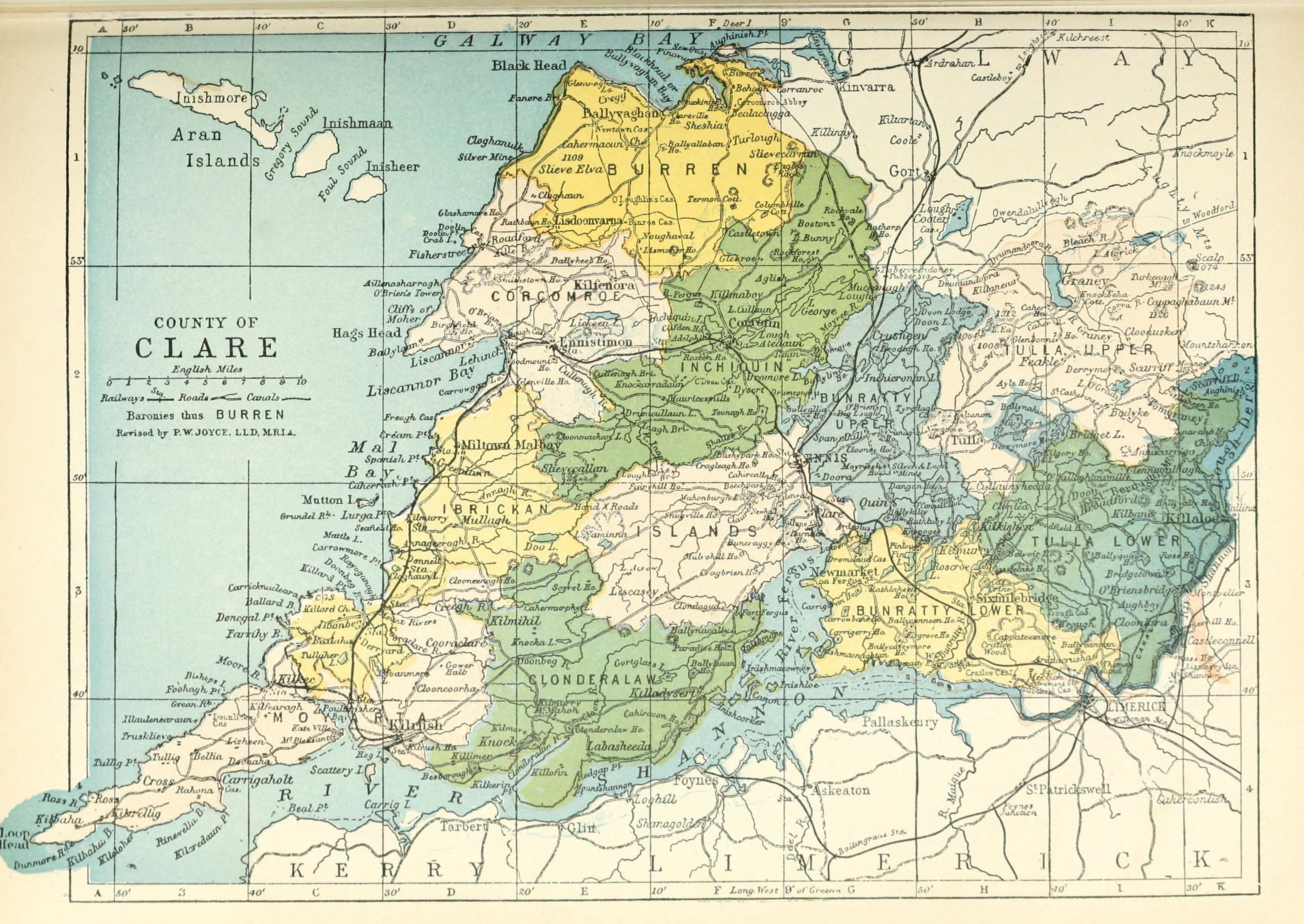|
Doonbeg River
The Doonbeg ( Irish: ''Abhainn an Dúin Bhig'') is a river of County Clare, western Ireland. Its source is near Kilmaley, and it flows southward for about 7 miles before turning northwestward for about 15 miles and passing Cooraclare before flowing into the sea at Doonbeg. At Doonbeg village the N67 road crosses the river on a seven-arched stone bridge. On 20 September 1588, one of the ships of the Spanish Armada The Spanish Armada (often known as Invincible Armada, or the Enterprise of England, ) was a Spanish fleet that sailed from Lisbon in late May 1588, commanded by Alonso de Guzmán, Duke of Medina Sidonia, an aristocrat without previous naval ..., the '' San Estaban'', was wrecked near the mouth of Doonbeg. References Rivers of County Clare {{Ireland-river-stub ... [...More Info...] [...Related Items...] OR: [Wikipedia] [Google] [Baidu] |
Doonbeg Bridge
Doonbeg () is a village in west County Clare, Ireland on the Atlantic coast. The surrounding natural environment has supported its development as a tourist resort. The area was officially classified as part of the West Clare Gaeltacht, an Irish-speaking community, until 1956. Location Doonbeg is situated on the N67 between the towns of Kilkee and Milltown Malbay. The nearest large towns are Kilrush and Kilkee, which are both approximately away. The village is located in civil parish of Killard. It is part of the parish of Doonbeg (Killard) in the Roman Catholic Diocese of Killaloe. Doonbeg is surrounded by farmland, some of which is used for dairy farming. There is also an area of bogland near the village. The Doonbeg River flows through the village and enters the Atlantic Ocean at the nearby Doonbeg Bay. History Evidence of ancient settlement in the area include a number of ringfort sites in the surrounding townlands of Doonbeg, Doonmore and Mountrivers. A settlement has ... [...More Info...] [...Related Items...] OR: [Wikipedia] [Google] [Baidu] |
Irish Language
Irish (Standard Irish: ), also known as Irish Gaelic or simply Gaelic ( ), is a Celtic language of the Indo-European language family. It is a member of the Goidelic languages of the Insular Celtic sub branch of the family and is indigenous language, indigenous to the island of Ireland. It was the majority of the population's first language until the 19th century, when English (language), English gradually became dominant, particularly in the last decades of the century, in what is sometimes characterised as a result of linguistic imperialism. Today, Irish is still commonly spoken as a first language in Ireland's Gaeltacht regions, in which 2% of Ireland's population lived in 2022. The total number of people (aged 3 and over) in Ireland who declared they could speak Irish in April 2022 was 1,873,997, representing 40% of respondents, but of these, 472,887 said they never spoke it and a further 551,993 said they only spoke it within the education system. Linguistic analyses o ... [...More Info...] [...Related Items...] OR: [Wikipedia] [Google] [Baidu] |
County Clare
County Clare () is a Counties of Ireland, county in the Provinces of Ireland, province of Munster in the Southern Region, Ireland, Southern part of Republic of Ireland, Ireland, bordered on the west by the Atlantic Ocean. Clare County Council is the Local government in the Republic of Ireland, local authority. The county had a population of 127,938 at the 2022 census of Ireland, 2022 census. The county seat and largest settlement is Ennis. Etymology There are two main hypotheses for the origins of the county name "Clare". One is that the name is derived from Thomas de Clare, Lord of Thomond, Thomas de Clare an Anglo-Norman peer and soldier from the de Clare family, who was deeply embroiled in local politics and fighting in the 1270s and 1280 and had had acquired land in Kilkenny and Thomond that included the Castle of Clare. In 1590 County Clare was named after the castle, which is in a strategic location. An alternative hypothesis is that the county name ''Clare'' comes from ... [...More Info...] [...Related Items...] OR: [Wikipedia] [Google] [Baidu] |
Kilmaley
Kilmaley () is a village in County Clare, Ireland, west of Ennis. The name is from the Irish language or 'church of (Saint) Maley'. Geography The Kilmaley River runs through the village. Kilmaley is in the barony of Islands, much of whose land is moor or mountain. There is forestry, in which you can go on short trails and many lakes for fishing. There was a castle at Ballymacooda that in 1580 belonged to the Baron of Inchiquin. Kilmaley Parish The Kilmaley Parish area is the largest in County Clare. Every hill in the parish holds the remains of an ancient fort or rath, over 30 in total. As at 1845, the parish was crossed by the road from Ennis to Milltown Malbay. In the 1830s fairs were held at Cornally four times a year. In 1841 the population was 4,908 in 758 houses. Sports The Kilmaley Gaelic Athletic Association (GAA) club was senior champions of Clare in 1985 and 2004. There two sport fields in Kilmaley. The main field is a GAA field and the second is located behind ... [...More Info...] [...Related Items...] OR: [Wikipedia] [Google] [Baidu] |
Cooraclare
Cooraclare () is a village near Kilrush, in County Clare, Republic of Ireland, Ireland, and a Cooraclare (parish), Catholic parish by the same name. Location The village of Cooraclare is in the parish of Cooraclare (Kilmacduane) in the Roman Catholic Diocese of Killaloe. It is from Kilrush on the road from Kilrush to Miltown Malbay. The old name for the parish is Kilmacduane, which was joined for a while to the parish of Kilmihil. In 1848 the two were again separated and Cooraclare took its present name. The parish includes the village of Cree (Creegh), Cree, at times spelled Creegh. The parish has two churches, St Senan's in Cooraclare and St Mary's in Cree. Cooraclare lies on the Doonbeg River, River Doonbeg. Sport and culture Cooraclare GAA, Cooraclare have won the Clare Senior Football Championship in 1915, 1917, 1918, 1925, 1944, 1956, 1964, 1965, 1986 and 1997, and also hosts the Rose of Clare Festival every year in August since 1979 A song associated with Cooraclare is ... [...More Info...] [...Related Items...] OR: [Wikipedia] [Google] [Baidu] |
Doonbeg
Doonbeg () is a village in west County Clare, Ireland on the Atlantic coast. The surrounding natural environment has supported its development as a tourist resort. The area was officially classified as part of the West Clare Gaeltacht, an Irish-speaking community, until 1956. Location Doonbeg is situated on the N67 between the towns of Kilkee and Milltown Malbay. The nearest large towns are Kilrush and Kilkee, which are both approximately away. The village is located in civil parish of Killard. It is part of the parish of Doonbeg (Killard) in the Roman Catholic Diocese of Killaloe. Doonbeg is surrounded by farmland, some of which is used for dairy farming. There is also an area of bogland near the village. The Doonbeg River flows through the village and enters the Atlantic Ocean at the nearby Doonbeg Bay. History Evidence of ancient settlement in the area include a number of ringfort sites in the surrounding townlands of Doonbeg, Doonmore and Mountrivers. A settlement h ... [...More Info...] [...Related Items...] OR: [Wikipedia] [Google] [Baidu] |
N67 Road (Ireland)
The N67 road is a national secondary road in Ireland. It runs from Galway to Tarbert and passes through Oranmore, Clarinbridge, Kinvara, Ballyvaughan, Lisdoonvarna, Ennistymon, Lahinch, Milltown Malbay, Quilty, Doonbeg, Kilkee, Moyasta, Kilrush and Killimer. See also *Roads in Ireland *Motorways in Ireland *National primary road * Regional road ReferencesRoads Act 1993 (Classification of National Roads) (Amendment) Order 2018– Department of Transport A ministry of transport or transportation is a ministry responsible for transportation within a country. It usually is administered by the ''minister for transport''. The term is also sometimes applied to the departments or other government a ... {{Roads in Ireland National secondary roads in the Republic of Ireland Roads in County Kerry Roads in County Limerick ... [...More Info...] [...Related Items...] OR: [Wikipedia] [Google] [Baidu] |
Spanish Armada
The Spanish Armada (often known as Invincible Armada, or the Enterprise of England, ) was a Spanish fleet that sailed from Lisbon in late May 1588, commanded by Alonso de Guzmán, Duke of Medina Sidonia, an aristocrat without previous naval experience appointed by Philip II of Spain. His orders were to sail up the English Channel, join with the Duke of Parma in Flanders, and escort an invasion force that would land in England and overthrow Elizabeth I. Its purpose was to reinstate Catholicism in England, end support for the Dutch Republic, and prevent attacks by English and Dutch privateers against Spanish interests in the Americas. The Spanish were opposed by an English fleet based in Plymouth. Faster and more manoeuvrable than the larger Spanish galleons, its ships were able to attack the Armada as it sailed up the Channel. Several subordinates advised Medina Sidonia to anchor in the Solent and occupy the Isle of Wight, but he refused to deviate from his instructions to ... [...More Info...] [...Related Items...] OR: [Wikipedia] [Google] [Baidu] |
San Esteban (1588 Shipwreck)
The ''San Esteban'' was a ship of the Spanish Armada that was wrecked on the west coast of Ireland in 1588. All the survivors were killed when they reached the shore or taken prisoner and later hanged. Construction The ''San Esteban'' was probably built in Cantabria in 1586. She displaced 736 tons and had 26 guns. She was long, with a beam of and a draught of . Career In October 1585 King Philip II of Spain decided to invade England. The Armada (fleet) would travel from Spain to the Netherlands, from where it would escort the invading army under Alexander Farnese, Duke of Parma. The ''San Esteban'' was assigned to the Guipuzcoa Squadron commanded by Almirante Miguel de Oquendo y Segura. Her captain was Don Felipe de Córdoba. She carried 196 soldiers and 68 mariners. The Armada set sail from Corunna on 19 July 1588, and entered the English Channel on 30 July. The fleet was attacked by English ships repeatedly as it ran through the channel, and on the night of 7–8 August ... [...More Info...] [...Related Items...] OR: [Wikipedia] [Google] [Baidu] |





